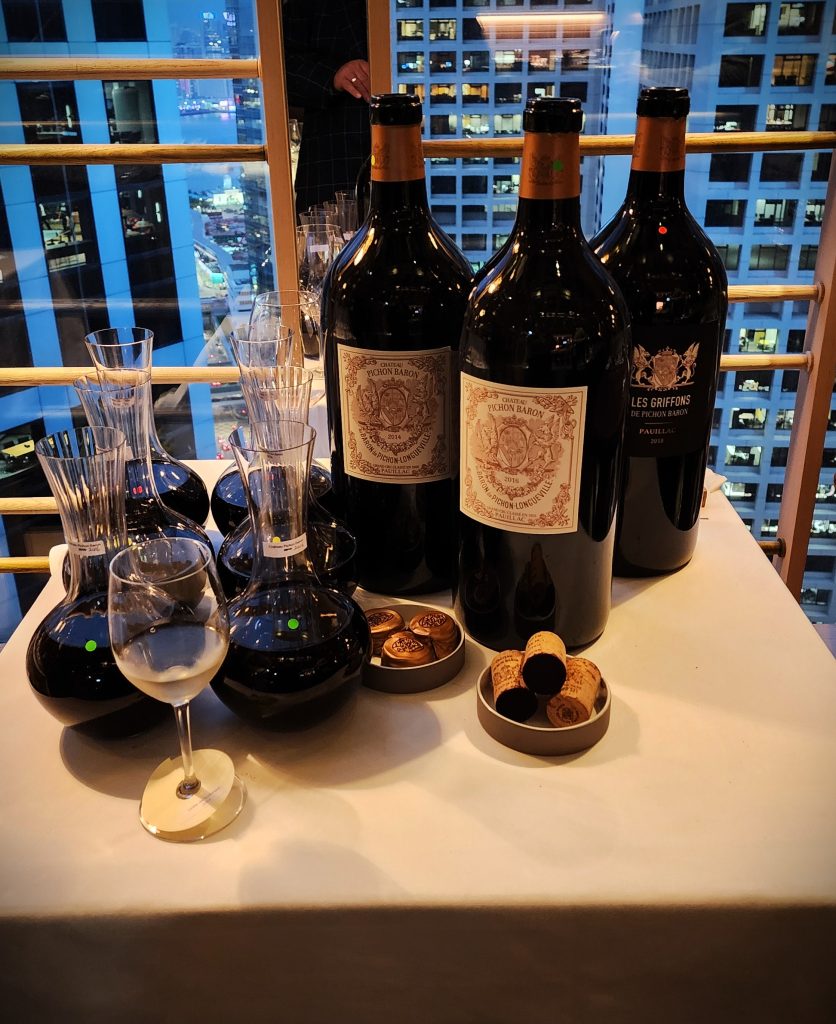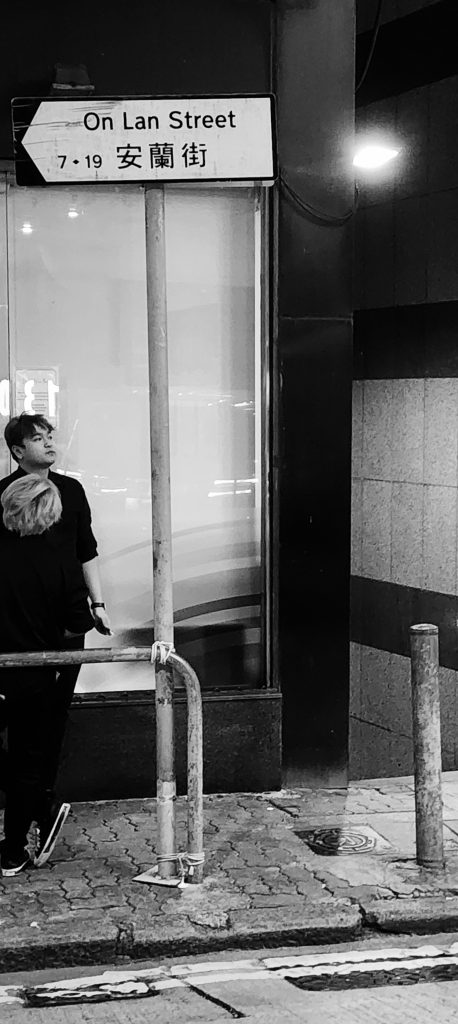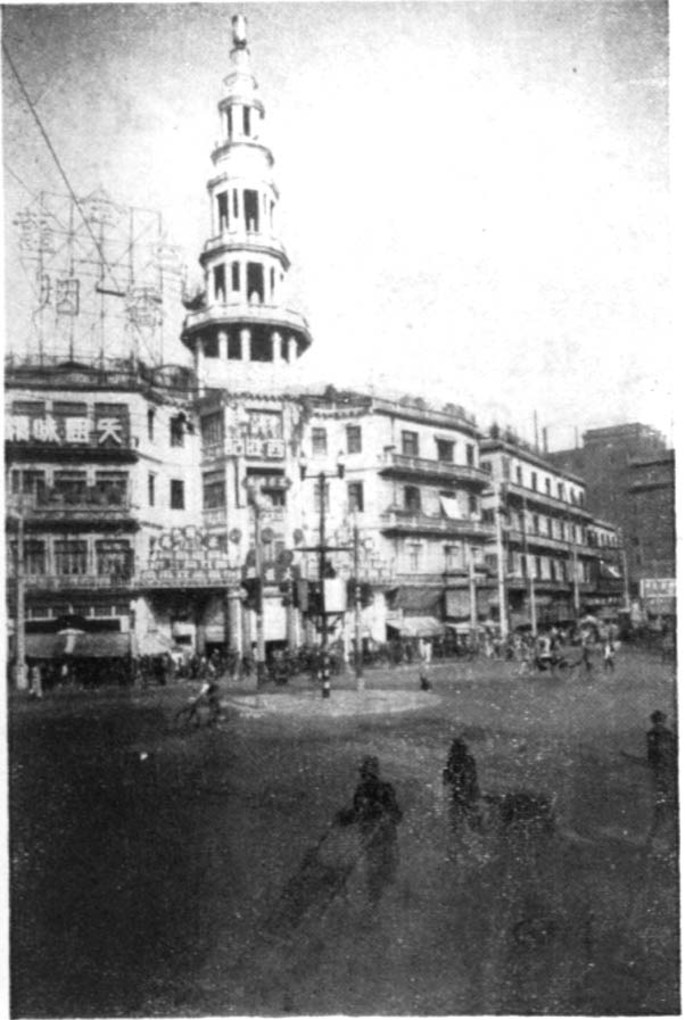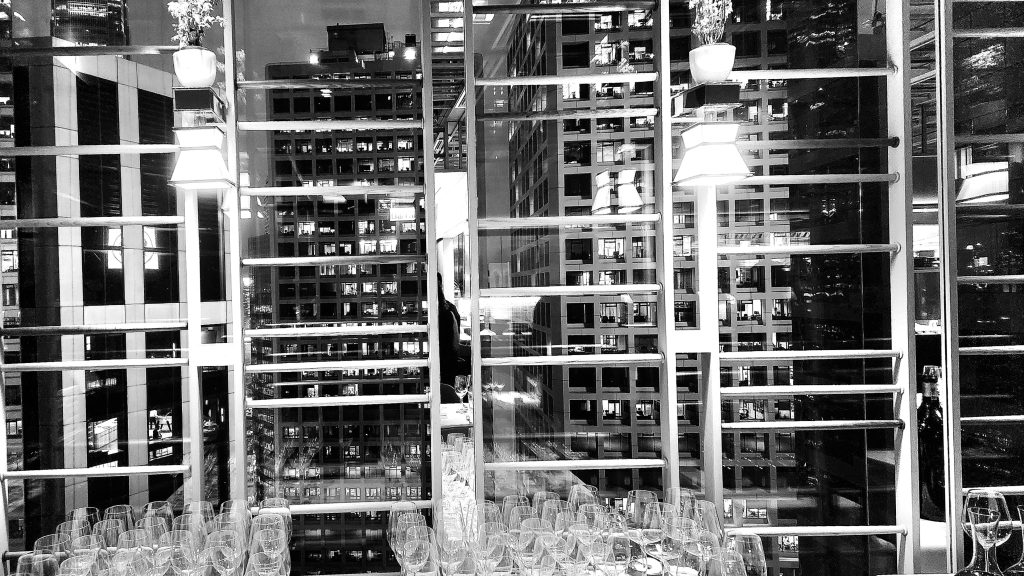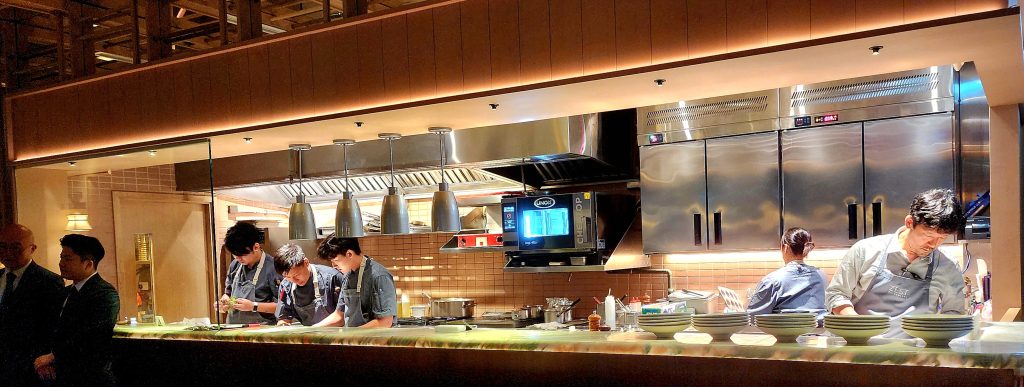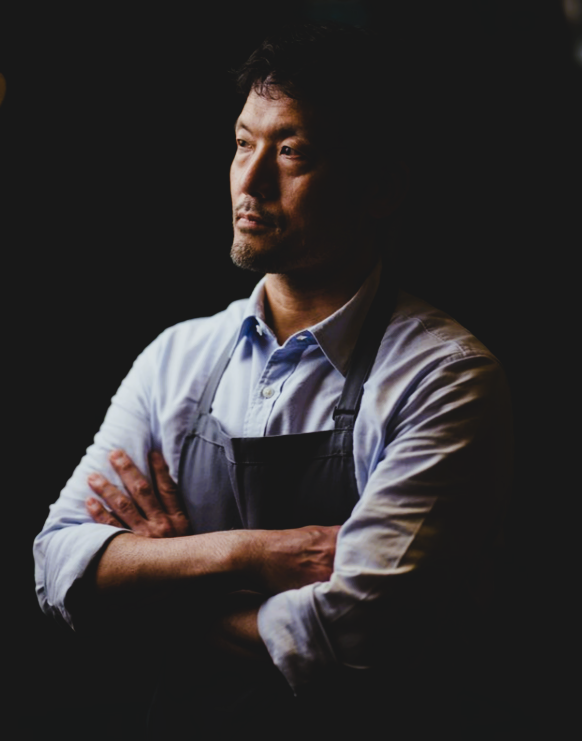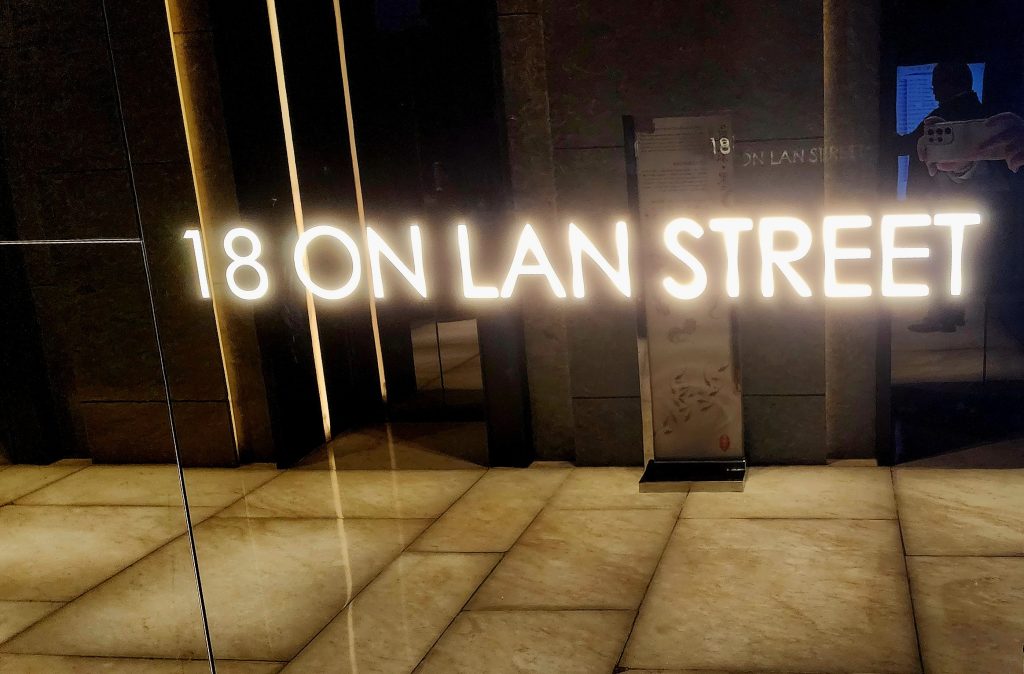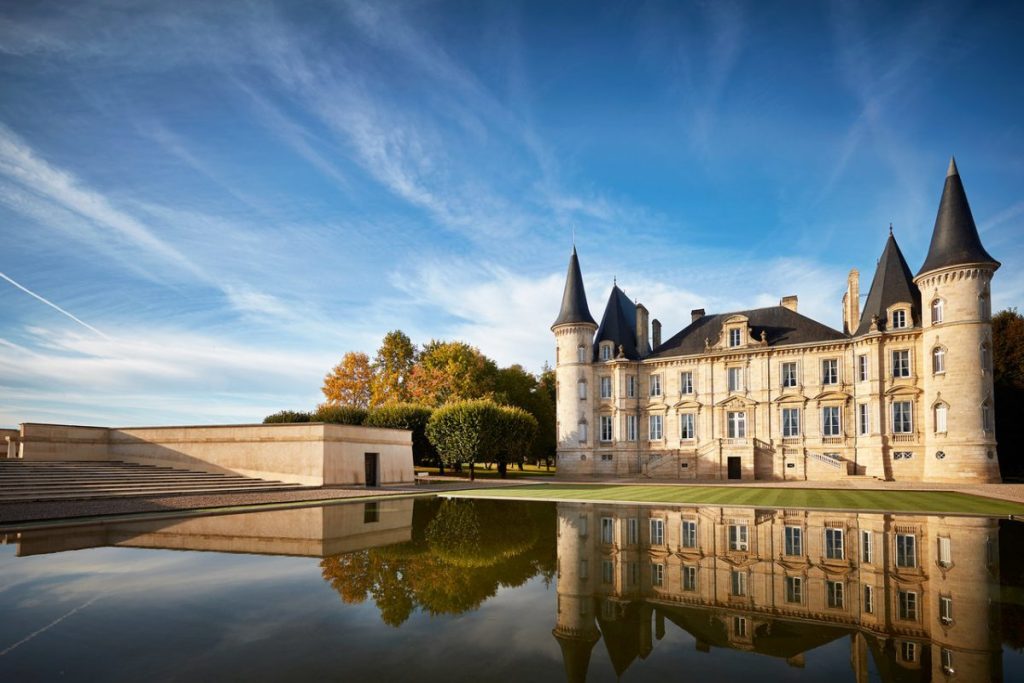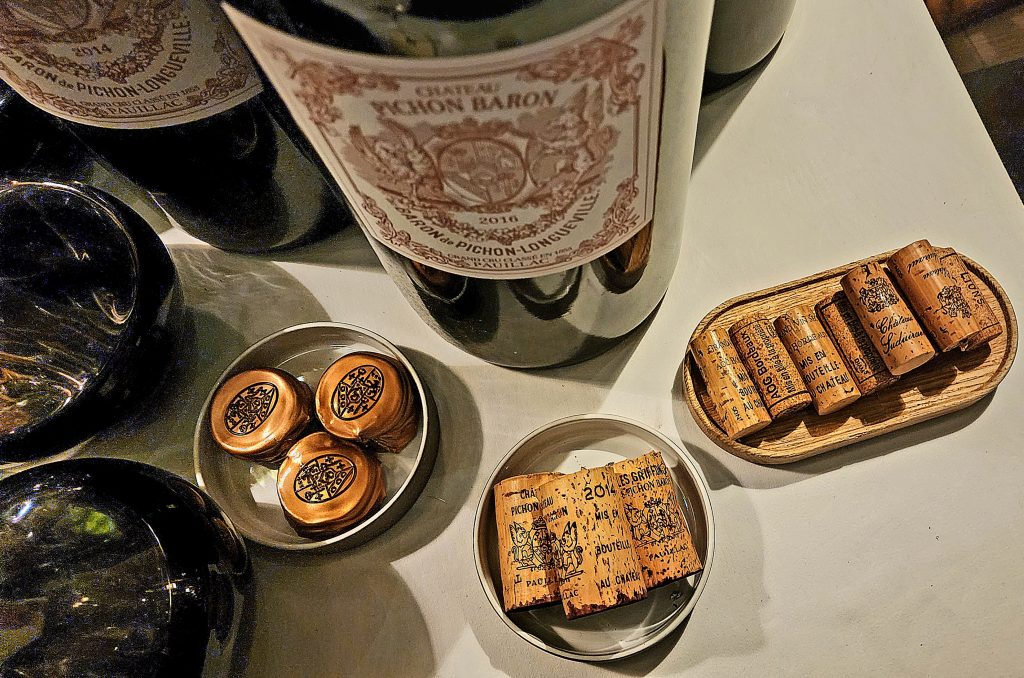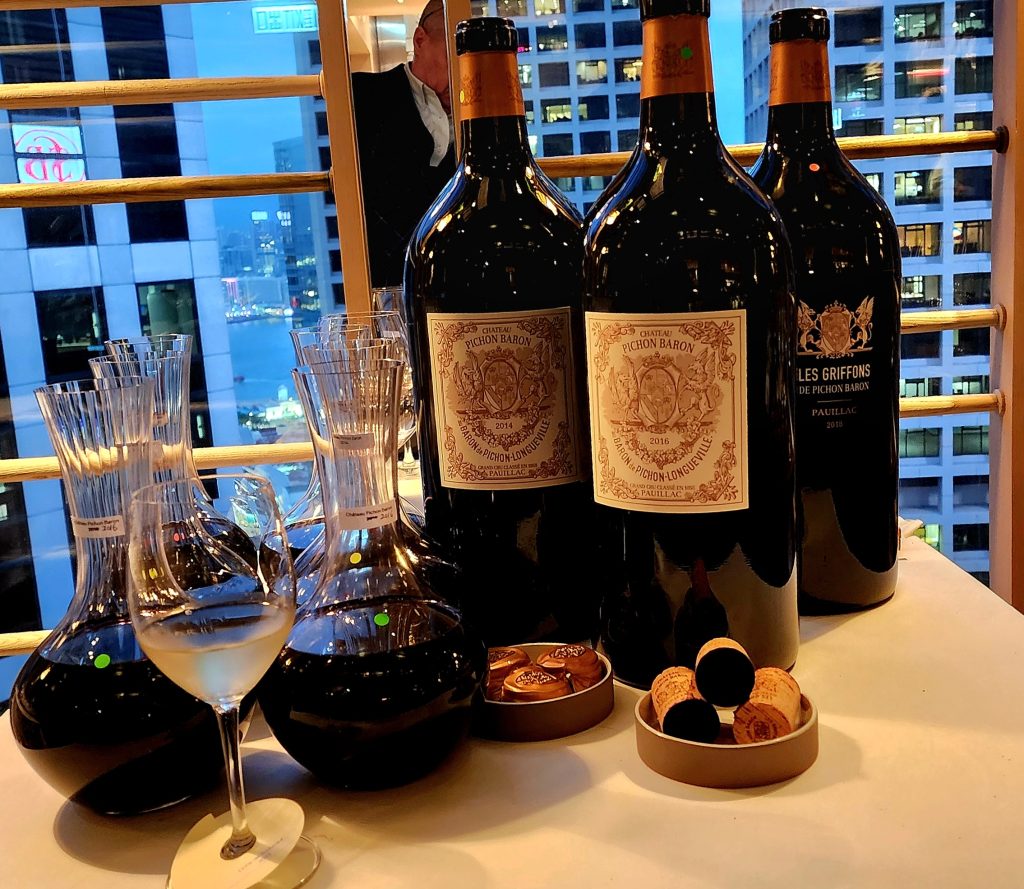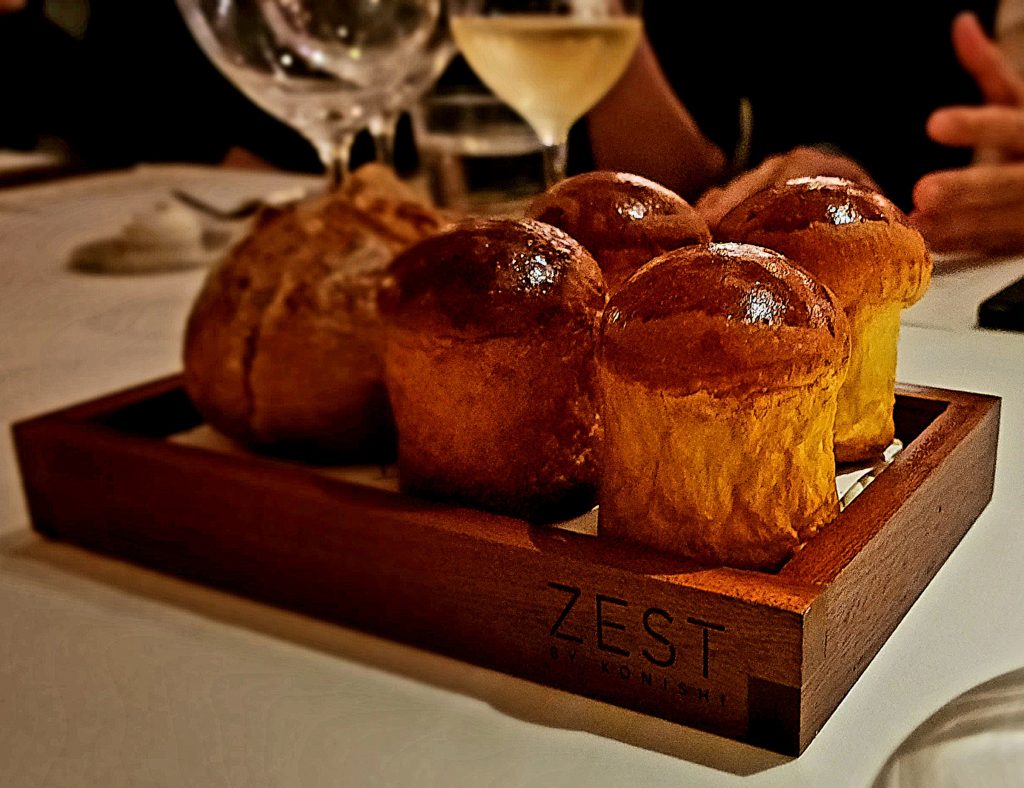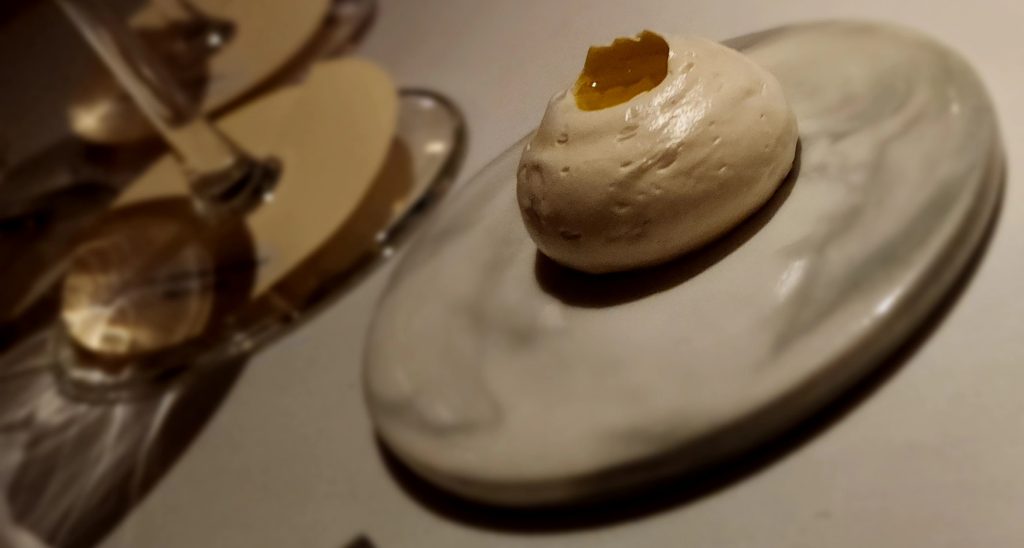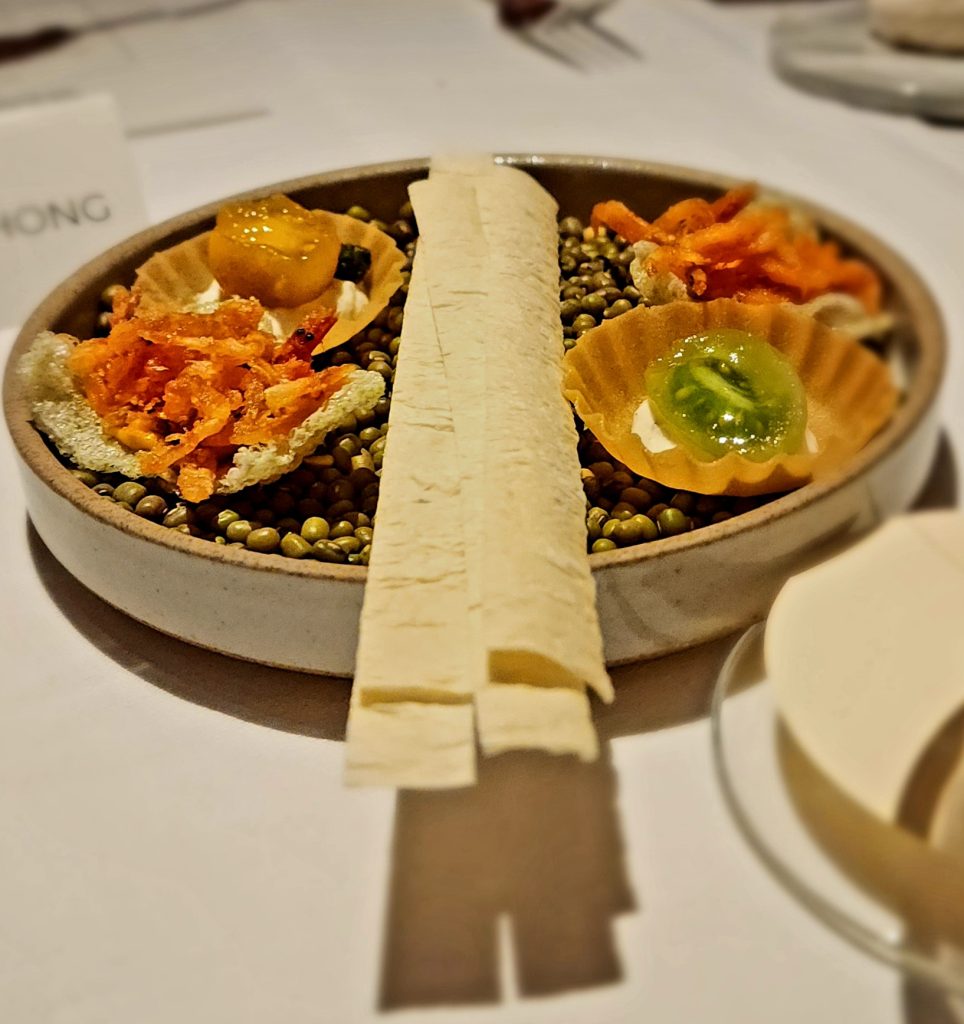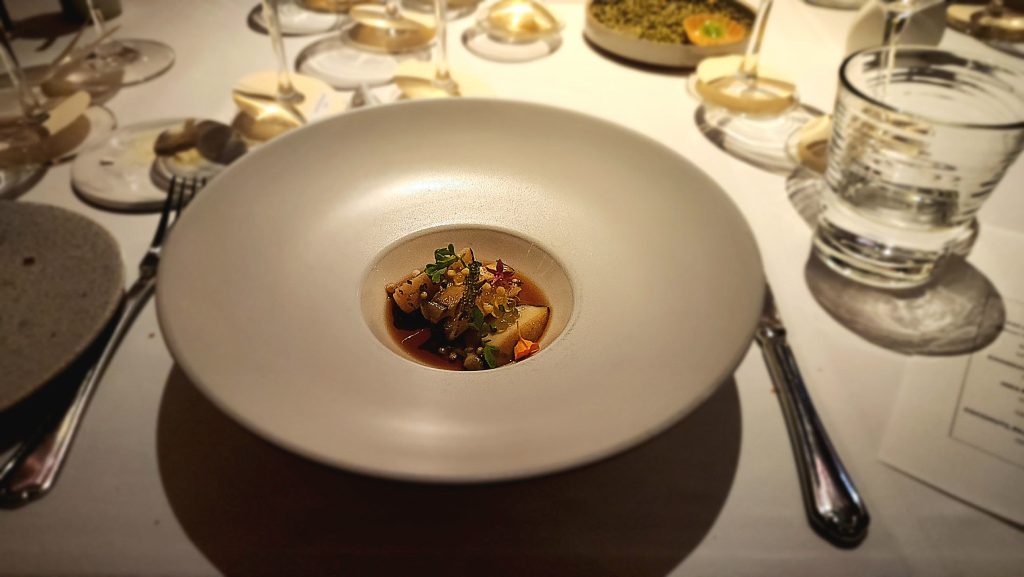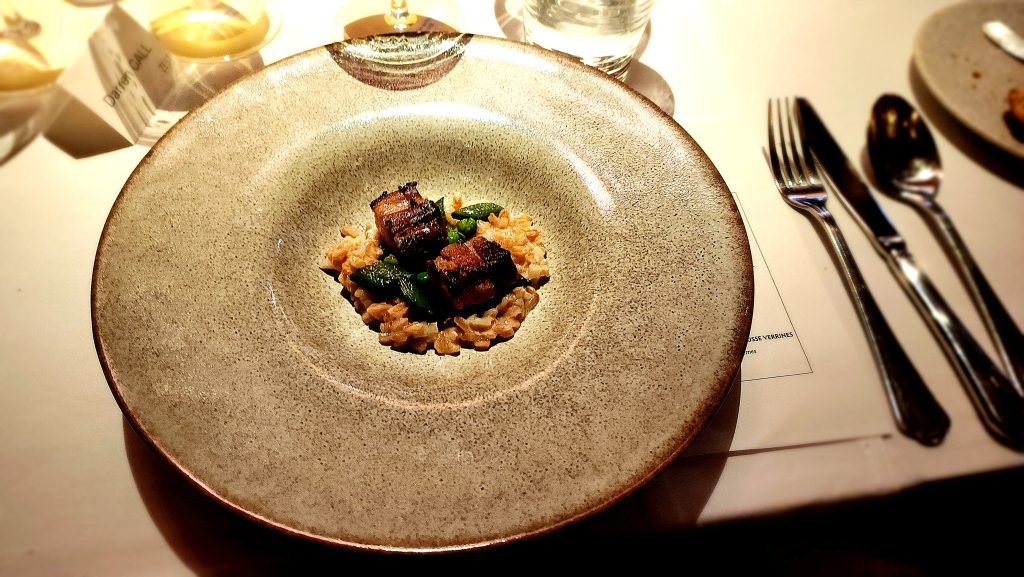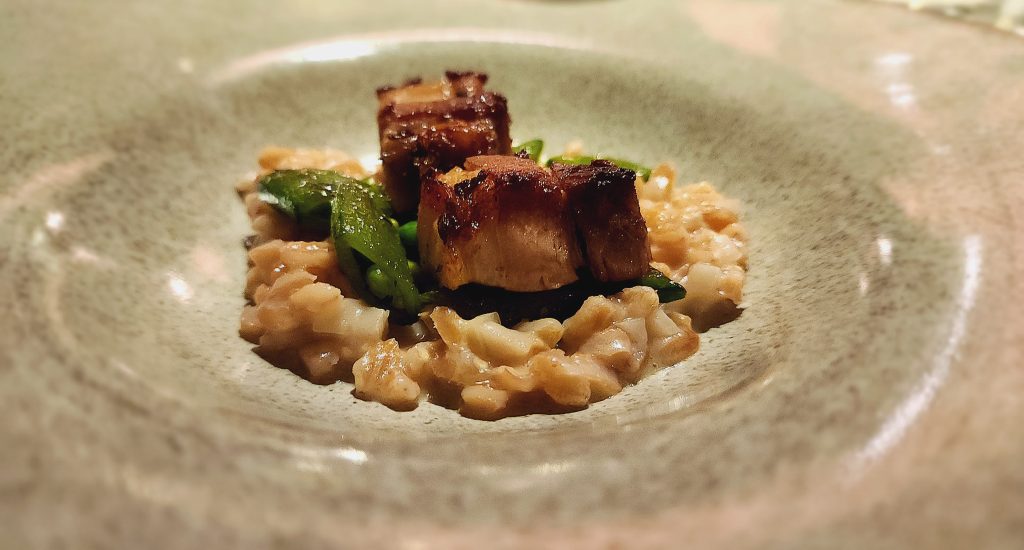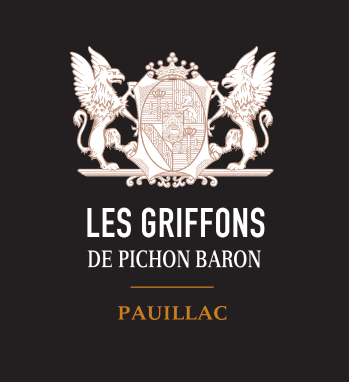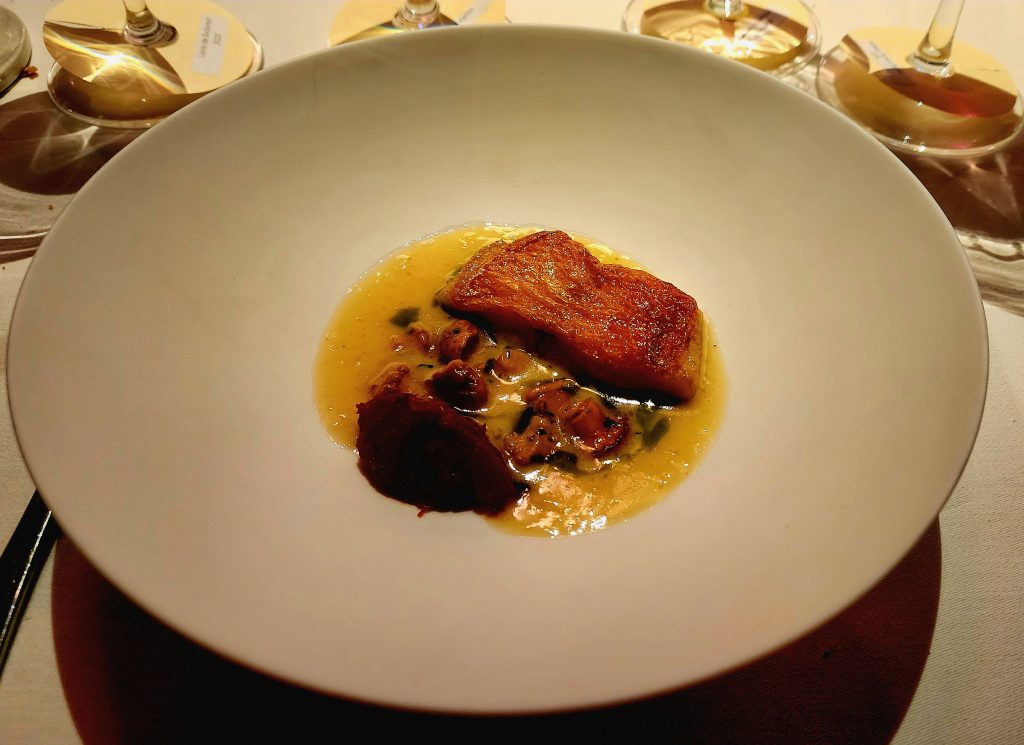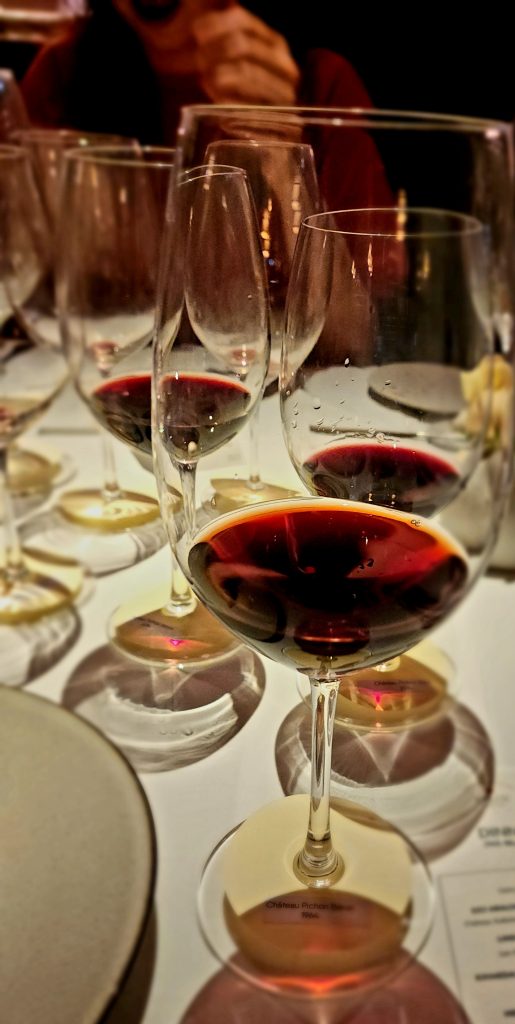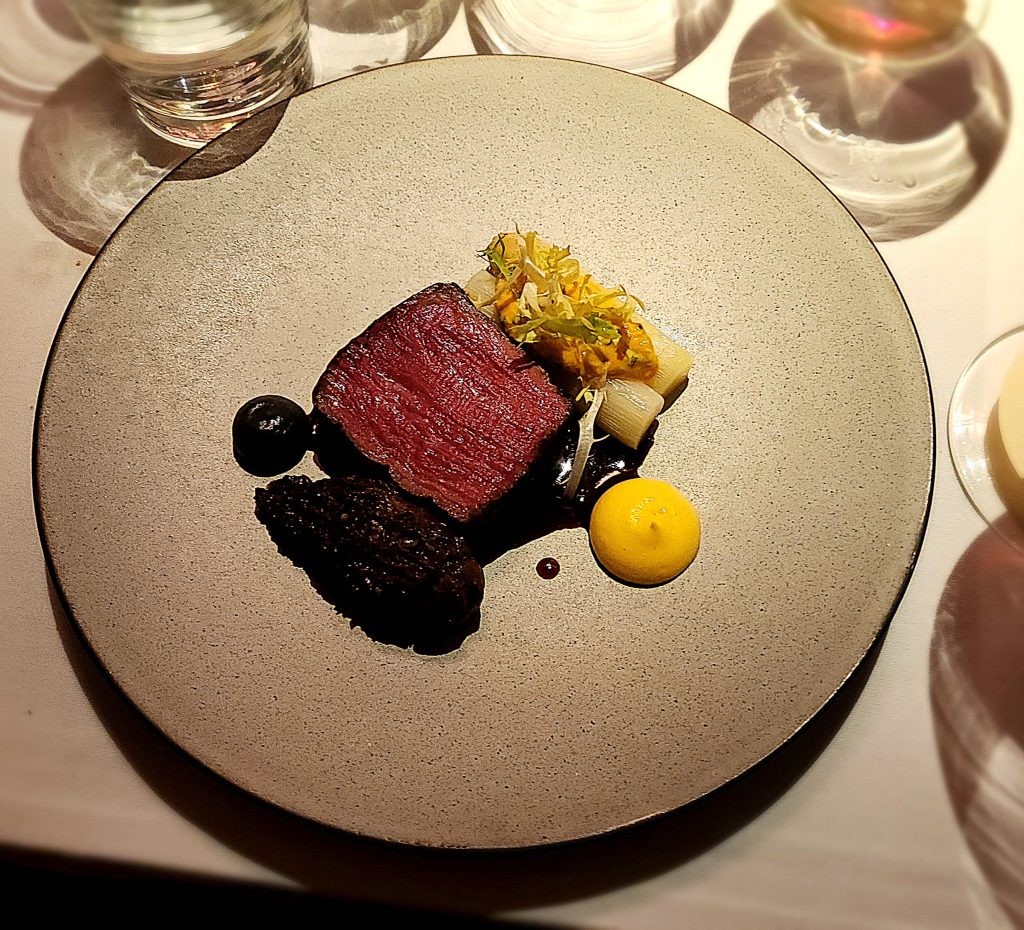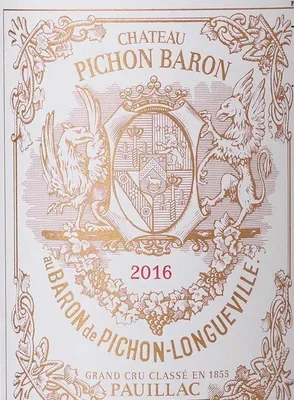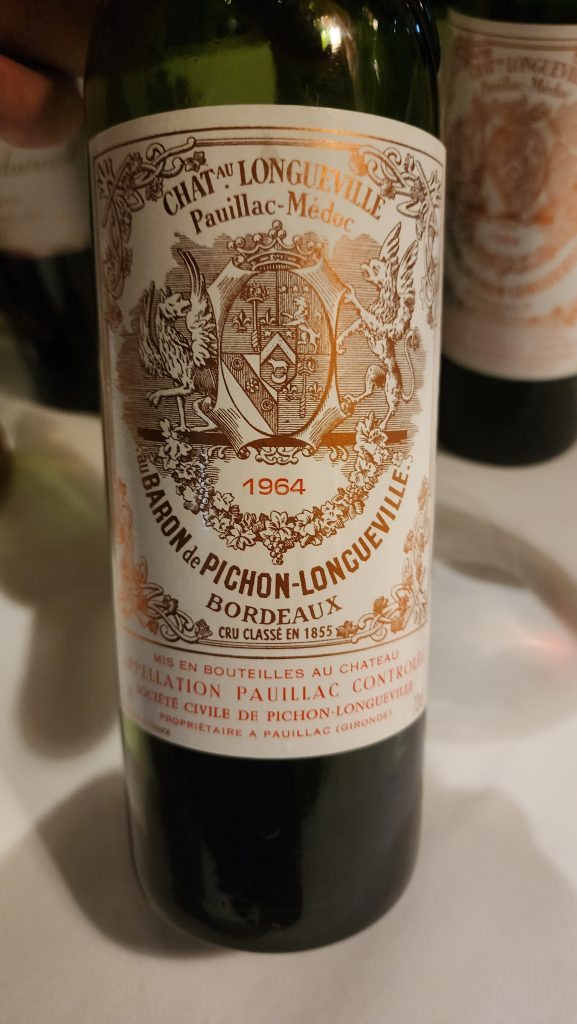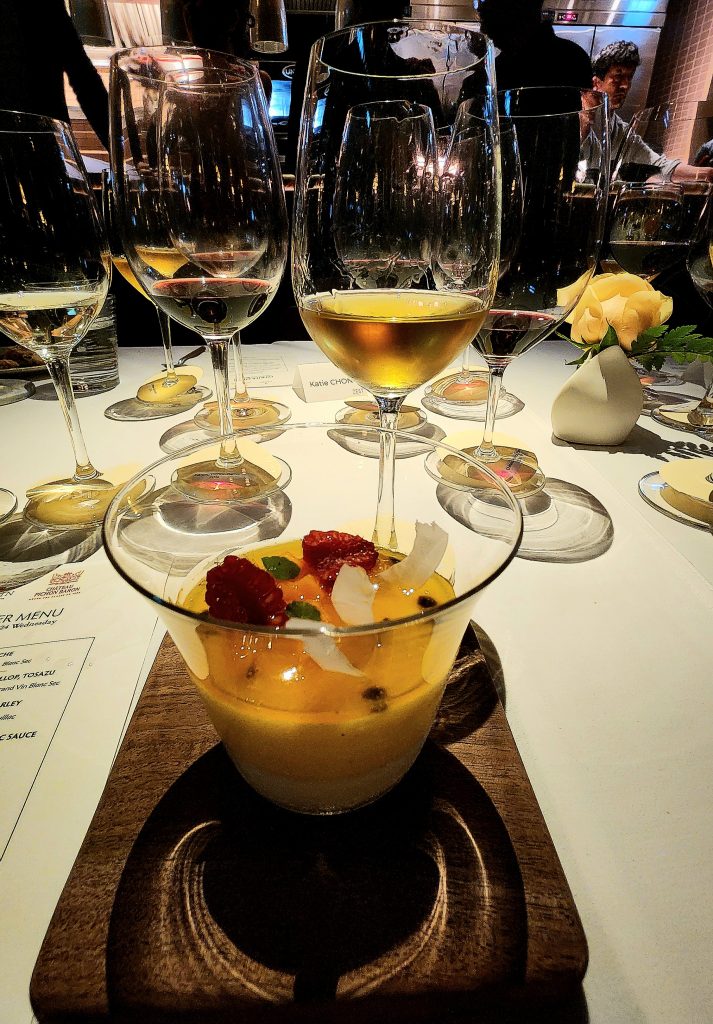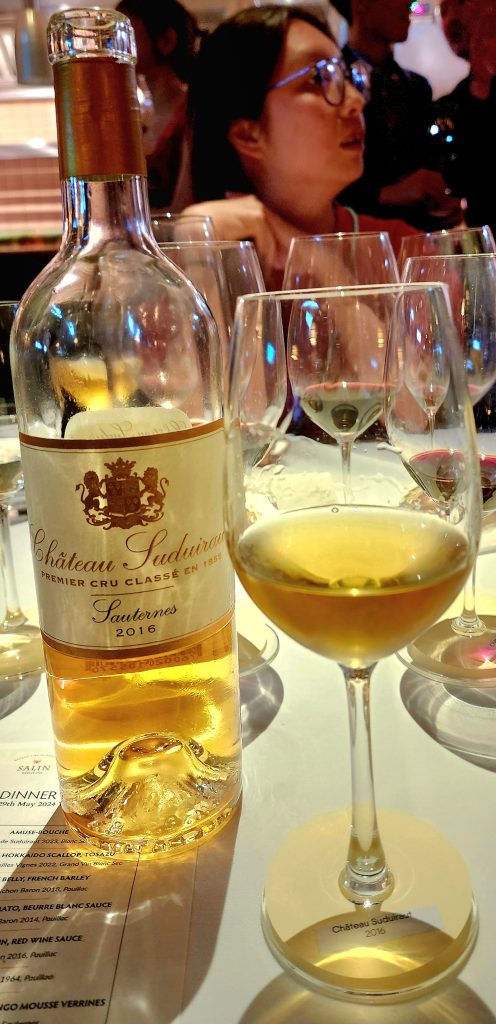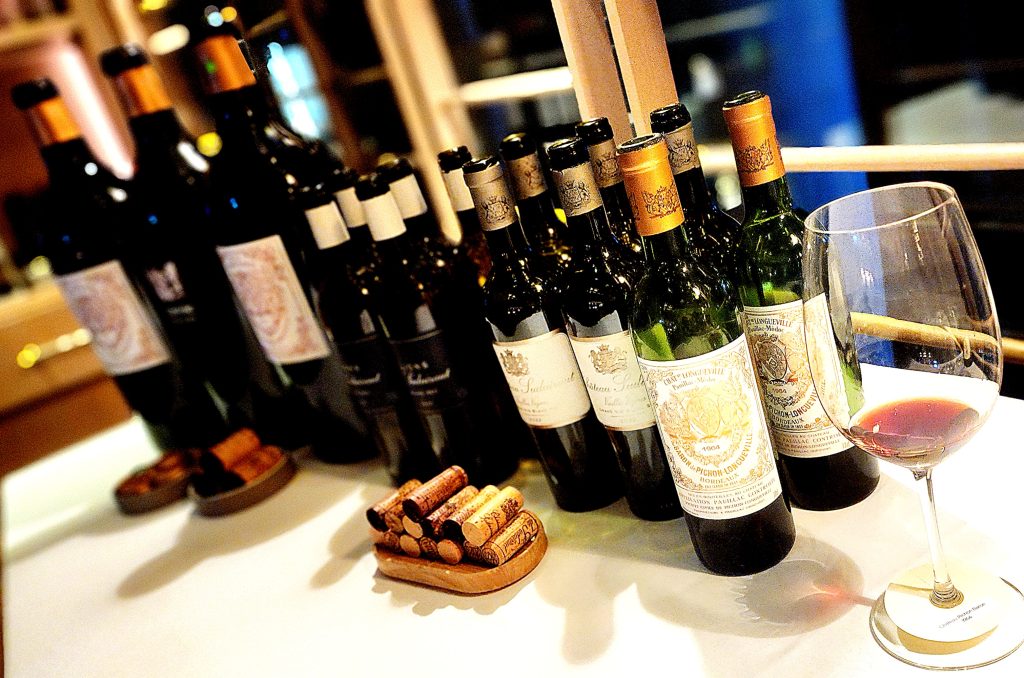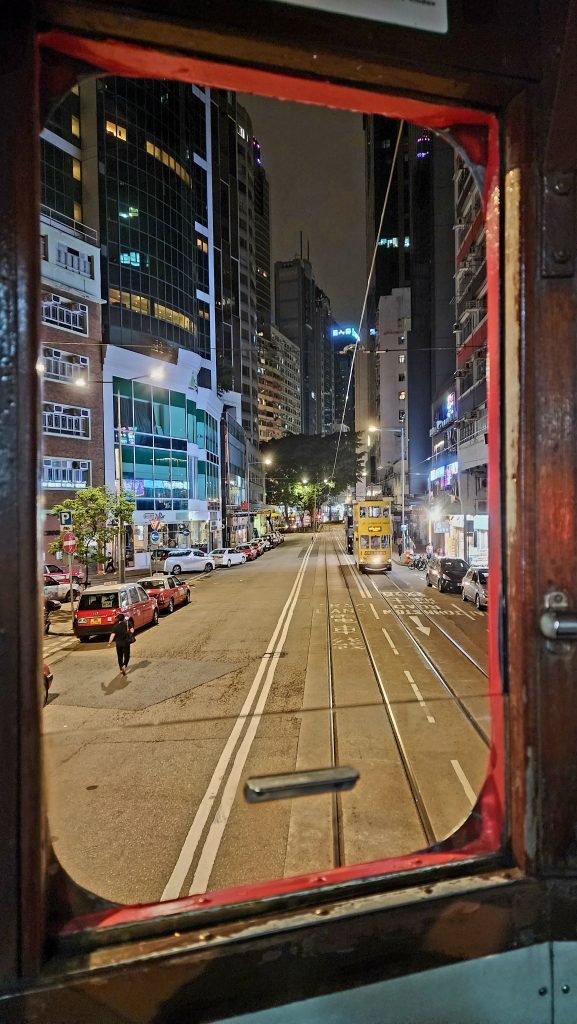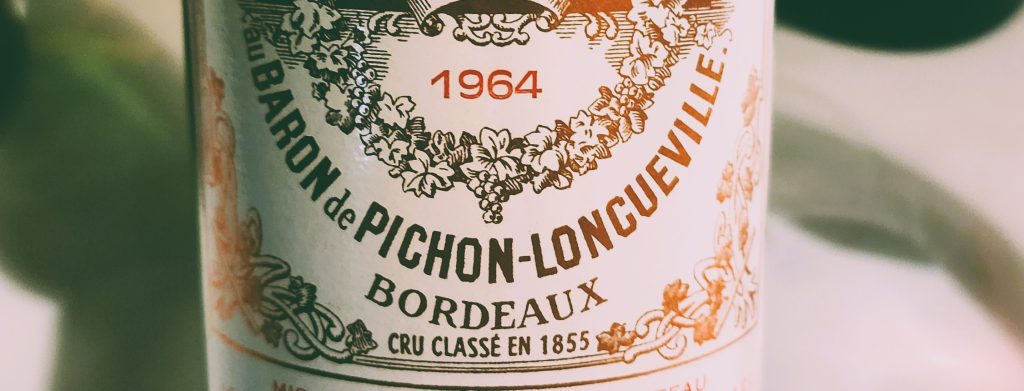Zest & the Baron
In the Mood
Hong Kong Island: I wound my way down Hennessey Road on an impossibly thin, old, ‘double-decker’ tram, the carriage made of ancient wood, worn down to the colour of crude opium. The tramway commenced operation here in 1904, always electric it was hoped that it would give some relief to people’s reliance on ‘chair-coolies’ to transport them about the city.
I scrambled up a narrow stone staircase under a light evening rain, arriving at the foot of a ‘mid-levels’ monolith, where I could take shelter. I noticed the street sign, On Lan Street, I had arrived at my destination.
It felt like the set of a Wong Kar-wai movie; Dù Kěfēng (cinematographer Christopher Doyle) playing with the dull, flickering light of a streetlamp, blinking between gritty, urban decay and a stark, jarring hyper-reality. The building was called ‘18 On Lan’, all glass and steel cables, grey and black, at night, in this light it had a slightly Derridean, deconstructed look about it, Gotham meets Run Run Shaw’s Blade Runner.
This is the Hong Kong I remember and love, but it is nothing if not a contradiction. As I rose above the ‘kipple’ of the lower levels in a small, clunking elevator, badly in need of a service, I could feel my pulse quicken, my heart jump, anticipation growing, like a hope given a promise.
Leaping Tigers
The Great World Complex opened in Shanghai on 14 July 1917, on Avenue Edward VII (now Yan’an Road) and Yu Ya Ching Road (now Middle Xizang Road). A six-story, integrated entertainment building, it became the most famous complex of its type throughout pre-revolution China and, (given its location in the French Quarter of the International Settlement area) it also became the setting for many myths and legends throughout the rest of the world.
Hollywood film director Josef von Sternberg, who directed Marlene Deitrich in ‘Shanghai Express,’ (1932), wrote of his visit to The Great World around this time:
“On the first floor were gaming tables, singsong girls, magicians, pick-pockets, slot machines, fireworks, birdcages, fans, stick incense, acrobats, and ginger. One flight up were… actors, crickets and cages, pimps, midwives, barbers, and earwax extractors. The third floor had jugglers, herb medicines, ice cream parlours, a new bevy of girls, their high-collared gowns slit to reveal their hips, and (as a) novelty, several rows of exposed (Western) toilets. The fourth floor had shooting galleries, fan-tan tables, … massage benches, … dried fish and intestines, and dance platforms. The fifth-floor featured girls with dresses slit to the armpits, a stuffed whale, storytellers, balloons, peep shows, masks, a mirror maze, two love letter booths with scribes who guaranteed results, rubber goods, and a temple filled with ferocious gods and joss sticks. On the top floor and roof of that house of multiple joys, a jumble of tightrope walkers slithered back and forth, and there were seesaws, Chinese checkers, mahjong, … firecrackers, lottery tickets, and marriage brokers.”
In a novel about the old city, it was written that many happy and excited people would enter The Great World on the ground floor only to throw themselves off the building once they had reached the roof top. Penniless and satisfied that -over their final hours- they had seen and done all that life could ever possibly have to offer.
Zest for Life
The elevator whirls to a rather unsteady halt on the penultimate floor, and I walk out into a tiger cage. The space has a stylish, well-appointed bar, but there are many more bars that draw your attention here, horizontal and on every window, the lights of the city blinking their code through thin oblong spaces.
I am ushered upstairs, (tonight we are taking over the entire top floor.) and there, behind the pass is chef Mitsuru Konishi, prowling up and down a long and narrow kitchen, (on display to his diners). He glides elegantly about his domain with feline movements, pacing with measured steps. There is a restrained calm before he unleashes his immense talent, his art leaping over the pass onto a slightly nervous, anticipating audience.
This is the restaurant created for and driven by one of Hong Kong’s greatest and most admired chefs; at this moment, he is like a conductor getting ready to take command of his orchestra, (the kitchen team) final preparations are being done before the whole room bursts into life.
Watching the brigade behind the pass preparing the dinner, it is not caged tigers leaping through flaming hoops (perhaps suggested by the barred windows) that one conjures visions of. Instead, with their focus and poise, movements brisk, precise, careful, the teamwork, never missing a beat, I think of ballet, a culinary performance part classical, part contemporary. This is Zest by Konishi.
Tonight, we are pairing Bordeaux wines with French, and Japanese fusion cuisine in the hands of two of its finest exponents, I am confident and ready to take a leap of faith.
Chef
Chef Mitsuru Konishi delivers food that is at times exciting, even breathtaking and at others, simple and joyous, food of the heart. His plates have an elegance and beauty born of incredible creativity, commitment, and skill. His food is a delicate blend of modern French technique and inherent, instinctive Japanese expressions and finesse.
Entering the industry at 18, the Okayama native’s career has taken him through some of the world’s most brilliant and demanding kitchens. In Tokyo, he worked at the two Michelin-starred L’ATELIER de Joël Robuchon, and in France at L’Hôtel de Carantec and at Taillevent, where he became the first Japanese Sous Chef in the entire history of this world-famous restaurant.
Joining Hong Kong’s Lai Sun Dining in 2013, Chef Konishi soon accumulated numerous awards, earning Two Michelin stars as Executive Chef of Wagyu Takumi in 2014. He gained a coveted star for ZEST by Konishi within the first year of its opening.
As the name implies, the restaurant is all about freshness, seasonality, spontaneity, imagination, and creativity; underpinned by the chef’s formidable ability, technique, and experience.
“There are two reasons that made me follow my dreams and become the chef I am today. First, my mother inspired me and influenced my work and second of all, it was the outcome of cooking with ingredients, sometimes as simple as olive oil, eggs, and bacon,” Konishi told the Michelin Guides Debbie Yong in 2020.
What I discover about Chef Konishi, is that underpinning his food is his incredible ability to source the finest ingredients and bring out its absolute best qualities in an original dish.
Dining with the Baron
This was the middle of VineExpo Asia’s triumphant return to a post-Covid 19 Hong Kong, my hosts for dinner this evening were the long-standing and exceptionally fine negociant, Maison Salin and the exceptional Pauillac winery Chateau Pichon Baron. Jerome Opillars of Maison Salin graciously sat me with Xavier Sanchez, the Commercial Director of Marketing for the Chateau and, having surveyed the wines on offer I knew we were in for a very special evening of vinous treasures.
The estate was founded in the late 17th Century, the Grand Siècle, the era of Louis XIV’s accession to the French throne would become known. In 1689 Pierre Desmezures de Rauzan, an influential wine merchant and steward of the prestigious Latour and Margaux estates, purchased plots of vineyard land close to the Latour estate and created Enclos Rauzan.
These vines were part of his daughter Thérèse’s dowry when she married Baron Jacques Pichon de Longueville in 1694, and in that same year, Pichon Baron Estate was founded. It would remain an illustrious estate in the hands of the same family for generations.
In 1850, the property was divided in two. Baron Raoul Pichon de Longueville’s section became the Pichon Baron estate. The second section, belonging to his three sisters, became Pichon Comtesse. In 1852, The Baron commissioned the imposing château which stands proudly as the emblem of the property and its wines to this day.
During the Universal Exhibition of 1855, the wine was classed as a Second Grand Cru Classé according to the ranking system requested by Emperor Napoleon III, who wished to showcase Bordeaux’s great wines.
In 1933 the Pichon de Longueville family sold the property to the Bouteiller family, who managed Château Pichon Baron for over 50 years. In 1987, the estate was acquired by AXA Millésimes, whose aim has been to produce great wines from these glorious vineyards, continuing to allow the property to achieve its full potential. After an architectural competition was held, a new, state-of-the-art winery and cellar were constructed, and the Chateau was fully renovated and restored.
Another highlight of the property is the large, ornamental, reflecting pool before the Chateau, which conceals the expansive underground cellar.
Chateau Pichon Baron produces wines of great power befitting the finest first and second growth wines of Pauillac, they also possess a grace and finesse that have made them some of the Medoc’s finest wines since the turn of the century.
The seventy-three-hectare vineyard is planted to Cabernet Sauvignon (65%), Merlot (30%), Cabernet Franc (3%) and Petit Verdot (2%). The Cabernet Franc and the Petit Verdot are not used in the Grand Vin and are kept only for the second-tier labels, Les Griffons de Pichon Baron and Les Tourelles de Longueville. Soils are mostly deep gravel, sand, and clay.
Great emphasis is placed on sorting in the vineyards and at the winery, using satellite technology in the vineyard optical sorting technology, with only the absolute best fruit being selected for Chateau Pichon Baron and a much larger portion relegated to the lesser tier wines.
The style of Chateau Pichon Baron’s wine is powerful, with incredible depth and volume of rich, ripe fruit, they are well structured wines with assertive, fine, ripe tannins when young and age magnificently over time, improving for decades if well cellared. Aged wines from the Chateau retain impressive freshness and take on a remarkable complexity.
The Dinner
In 1992, AXA Millésimes also acquired the exceptional Sauternes property Chateau Suduiraut, whose history as a wine producer can be traced back to 1580. The evening commenced with an amouse bouche and a glass of the Lions de Suduiraut, Blanc Sec.
Ezo abalone, Hokkaido scallop, tosazu
A magnificent way to start with the delicate textures of perfectly cooked abalone and scallop adorned with sea-grapes, tiny pearls of yuzu and edible leaves and flowers, with a tosazu broth.
Chateau Suduiraut, Vielles Vigne Grand Vin, blanc sec 2022
The wine was outstanding, and a delightful pairing. A blend of 55% Semillon and 45% Sauvignon Blanc, matured on yeast lees in 30% new and 70% second-fill oak for nine months. Vine age is between 45 and 65 years. There is plenty of power and tension here, with ample fruit notes of marmalade, pear, beeswax, lemon pie crust and a whiff of gunflint. The palate is dry yet generous with peach and marmalade fruit, a touch of citrus and all finishing with dazzling minerality.
Lindo pork belly, French barley
An astonishing dish, the flavour, texture, and sheer quality of the pork belly had me quickly filing it under ‘this is perhaps the best you’ve ever had!’ Tender, succulent and oh-so flavourful, the ‘French’ barley and greens prepared perfectly, as the perfect accompaniment. This was an essay in understated excellence. Baroque in its sensual richness yet modal in its simple, mesmerizing harmony.
Les Griffons de Pichon Baron, 2018, Double Magnum
Les Griffons de Pichon Baron is a ‘second wine’ from the property, the first release was the 2012 vintage. The fruit for this blend of 52 percent Cabernet Sauvignon and 48 percent Merlot comes from gravel-laden plots near the Gironde estuary, where the Cabernet Sauvignon performs exceptionally well. The wine spent eighteen months in oak, sixty percent new and 30 percent, second fill.
The wine aromatically was all black currants, sassy oak, and dark chocolate, with just a hint of sage. The palate was rich and lush with dense fruit and a fine savoury finish. A very impressive ‘second label’ that shows off high-quality Cabernet Sauvignon fruit and ripe, supple Merlot all with impressive Pauillac power and grace.
Kinmedai & squid with a tomato beurre blanc sauce
Zest in abundance here, beautifully so, with the Kimmedai, a fish rich in fatty tissue and loaded with umami flavour, and then the textural, mildly sweet flesh of the squid. The tomato beurre blanc brings lovely acidity and freshness which in turn brings balance and elevates the whole plate.
Chateau Pichon Baron 2014, Double Magnum
Made from the oldest vines on the property and with the Merlot sitting right next door to Chateau Latour, the wine shows impressive power, depth, and full ripeness, given elegance, charm and refinement by the addition of superb Merlot fruit. The aromas are of forest berries, coffee grinds, pencil lead and cigar box, with a touch of axle grease and a whiff of iron fillings. Brooding and powerful, this is a stunning wine, with a whirlpool of creamy dark fruits, mulberries, leather, and spice swirling onto the palate, before flexing its impressive evenness, complexity, and length through the palate, before giving way to textural, ripe, fine tannins.
Hida beef tenderloin, with a red wine sauce
Hida Beef is a regional designation awarded to Japanese black cattle of the highest quality that are bred in the Hida region of Gifu Prefecture. Hida beef has been awarded as Japan’s Best Beef multiple times, including the prestigious Zenkoku Wagyu Noryoku Kyoshinkai, held every five years and known as the ‘Wagyu Olympics.’ Hida A5 beef is renowned for its exceptionally high marble scoring, its marbling is so ubiquitous that it even appears across the flank, shoulder, and round of the beef, making for a phenomenally tender. It has been said that Hida beef is the embodiment of Japan’s sentiment, a delicacy crafted through deep consideration, prepared with the utmost care, and served in carefully curated settings. There are less than fifty outlets outside of Japan certified to prepare and serve Hida beef. Here it was tender, flavourful, and excellently prepared. The sauces and accompaniments mere flourishes designed to highlight the incredible quality of this protein.
Chateau Pichon Baron 2016, Double Magnum
Heat and drought before harvest meant this was a vintage of small berries supercharged with an intensity of flavours, A blend of Cabernet Sauvignon (85 percent) and Merlot (15 percent) the wine is matured in 80 percent new oak for about eighteen months.
Aromas are explosive, chocolate-covered cherries, currents, plums, spices, cigar box. Here is a wine that isn’t so much as inviting, it more or less just straight-up grabs you in a headlock and plunges you into its charms. However, it is irresistible and there is no resistance, once the heady, lusty exuberance subsides one sees this wine clearly for what it is, a wine of great power matched by great beauty, if it sang opera, Escoffier would be naming dishes after it. Along with its powerful charm offensive, the wine has incredible depth and complexity, seemingly always having something more to reveal of itself tucked beneath another fleshy roll of fruit. Spices, flowers, herbs, exotica, before giving way to a fine chastity of ripe-tannins, savoury oak, and powdery acidity. Bravo!
Chateau Pichon Baron 1964
My birth year was a challenging vintage in Bordeaux, and for the Left Bank in particular; perfect conditions prevailed and had everyone predicting an excellent, perhaps unprecedented vintage. That was until the rains fell on October 8th and continued -ceaselessly- for many weeks. Those who managed to pick early did reasonably well, these were in the minority.
Incredible freshness and vitality for a wine 60 years of age, there are bright fruit notes still there, (currents, forest berries, plum) with rose petal, beef bouillon, licorice, sweaty saddle, tobacco leaf, vanilla pod and pu’er tea leaves. Sophisticated and complex on the palate with a mix of ripe and dried fruits, there is some pepper spice, dried herbs, and some earthy notes as well. This was a magnificent, aged Bordeaux from one of Pauillac’s finest producers, it was drinking beautifully and a real privilege to taste.
Coconuts, passionfruits & mango mousse verrines
A little verrine of sweetness, freshness, and lightness thanks to the acidity, it was a lovely way to finish.
Chateau Suduiraut 2016, Sauternes
The 2016 is a blend of 94 percent Semillon and 6 percent Sauvignon Blanc, aged (in 50 percent new barrels and 50 percent from one-year-old barrels) for 18 months before bottling.
This is a magical Suduirat with lots of candied fruits, papaya, apricot, pineapple, passionfruit, orange peel, lemon curds, it is rich and lush on the palate with a full 140 grams of residual sugar, nectar like with impressive length and a welcome brace of lively acidity. A fitting coda to a magnificent line up of wines.
This has been a dinner of remarkable talent, creativity and flavours, brilliant, contemporary, and well worthy of its exulted company with the majesty, power and grace of one of Bordeaux’s greatest producers. The wines absolutely shone, and the company was rightfully grateful and joyous.
I left for my hotel knowing that here had been a degustation I would not only never forget, but will celebrate for many years to come.
Darren Gall

